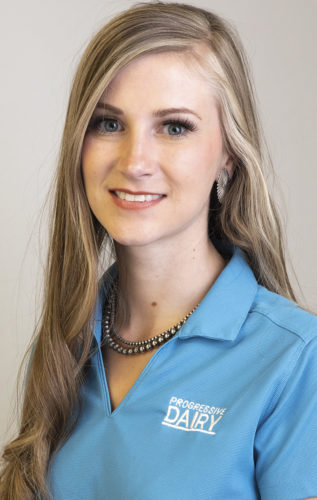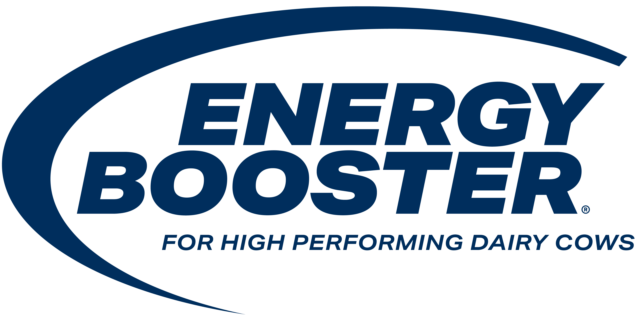The family originated from a 60-cow dairy in the middle Friesland province located in the Netherlands and is how they chose the name for their current dairy.
Family history
In 1994, eighth-generation dairy farmer Andle van der Ploeg decided to venture out from the Netherlands and dairy in the U.S. He started by renting a dairy facility in Dublin, Texas, milking 80 to 100 cows. A few years later, in the late ’90s, he outgrew the facility and ended up moving to Stephensville, Texas, where he again rented another dairy farm and grew his herd to 500 cows. In 2000, there was a big dairy boom in the Clovis, New Mexico, area where contractors would build dairies that weren’t even sold yet, says Andle’s son, Jeroen van der Ploeg.
“We heard they were going to build the dairy we are on now. However, at the time, my father didn’t have enough financially to buy this place, so he went in partnership with the builder who carried half of the loan,” Jeroen van der Ploeg says. “We started here with 750 cows, and the first cow was milked in 2001.”
When the Netherlands became part of the European Union, and the new regulations made dairy farming more challenging than ever, Andle decided to sell his original dairy in Friesland in 2003 and immigrate his family (Jeroen, his brothers Bart and Gerben, and his sister Karla) to the U.S. Settling in Clovis, New Mexico, the family continued milking cows, raising their own calves and harvesting their own feed, just like they did in the Netherlands.

Freanna yogurt
The van der Ploeg family had always enjoyed homemade yogurt made by Andle’s wife, Sjierkje. Her family recipe originates back to their time in the Netherlands.
“To be honest, we have eaten some extremely weird experimental batches of yogurt, to the point where it wouldn’t even stick on the spoon, because we had a little kitchen, and it was homemade trials,” Jeroen says.
Unable to find yogurt like it in the States, Jeroen’s father decided to build a 1,440-square-foot yogurt production plant next to their dairy in 2009. His vision was to continue the tradition and get their family yogurt “Freanna” out into the market.
The name “Freanna” is taken from Friesland, their homeland, and Anna, one of their highest-producing cows. Anna was bought in 1938, before WWII, in the Netherlands by Andle’s father. Andle learned to milk by hand when he was 6 years old on Anna. Her name is part of their history, and she lives on in Freanna Yogurt.
When they first started building their yogurt plant, it was hard to find the right equipment in the U.S.
“One company sent us a whole book of literature, saying, ‘This is how you have to make yogurt.’ We were like, ‘No, we know how to make yogurt. We need equipment to make it the way my mom makes yogurt,’” Jeroen says. “So we found a company in the Netherlands, and we explained the process of how she did it in the kitchen. We also took pictures of the building and floor plans it was going to go in. Their engineering team put the whole plant together with the correct volumes and sized the equipment to fit into the building. They then sent the yogurt equipment over to us in one big shipping container, and that is how we got started.”
The plant currently pulls a small percentage of milk from the dairy and the remaining milk is sold to DFA. The plant produces honey, agave and plain yogurt flavors.
“The plain yogurt is still our best seller. It is not as tangy or as sour as a lot of other plain yogurts are,” Jeroen says. “If you ever compare what is on the market to our yogurt, it’s like apples and oranges.”
According to their website, Freanna yogurt has a creamy, thinner consistency because it contains no thickeners (gelatin, pectin, guar gum, agar or tapioca starch) and is not strained like Greek yogurts.
Jeroen’s wife, Traci, does the marketing for Freanna, and his sister Karla is responsible for product development and sales.
Since their plant sells yogurt out of state, the van der Ploegs have to meet FDA requirements.
“They told us straight up they didn’t like the fact that we are right next to the dairy. Although consumers love the idea of yogurt made from farm-fresh milk, FDA does not. From a sanitary perspective, they don’t like that there are cows and manure two walls over from where we are making a great yogurt product even though the yogurt facility is completely inaccessible from the dairy, and only Freanna employees have access to the plant,” Jeroen says. “However, the cleanliness of the dairy overall improved to meet the standards for the yogurt production.”

Farm atmosphere
One thing Jeroen says has directly tied to their farm’s success has been keeping a good atmosphere in the workplace.
“It seems like if you have a very good, positive atmosphere at the dairy, at the calf ranch and around the farm, you have less stuff break down, [fewer] issues with the cows and, at the end of the day, you have employees who go home with a smile on their face,” Jeroen says.
Jeroen shares how he is able to keep a good atmosphere.
“As soon as there is a new employee, I like to look them in the eyes,” Jeroen says. “If there is no fire behind them, or a negative attitude behind them, I tend to tell my managers right away, ‘Hey, let’s weed them out because they are going to make your day harder.’”
“I’ll be honest, I’m proud of what my guys and girls – I don’t even want to call them employees – are capable of getting done on their own and in what kind of timeframe. You really come to a point where you weed out the individuals you know aren’t a good fit, and you get a couple of really good ones in there,” Jeroen says. “With that, the calf loss goes way down, there is more initiative, there is more happiness, there is more milk, and they are having fun. It is just joyful. That is what I’m most proud of on our dairy.”
In the next couple of years, the van der Ploegs plan to expand and grow their yogurt production abilities and create other milk-based products.
“Right now, we are building a somewhat bigger plant that will give us more opportunities to also make different dairy products in addition to more yogurt flavors, to be a little bit broader and have more capabilities than just the yogurt,” Jeroen says.
“I’m hoping to create a legacy that one day my children can take over if they choose to,” Jeroen says. ![]()
PHOTO 1: Ninth-generation dairy producer Jeroen van der Ploeg and his wife, Traci, with their three children, Geritt (4) and Teis and Andelynn (2).
PHOTO 2: Andle and Sjierkje van der Ploeg loved the yogurt they made in Holland and decided to make their product in the U.S.
PHOTO 3: Karla van der Ploeg, Jeroen’s sister, is passionate about Freanna and is responsible for product development and sales. Photo provided by Traci van der Ploeg.

-
Audrey Schmitz
- Editor
- Progressive Dairy
- Email Audrey Schmitz





